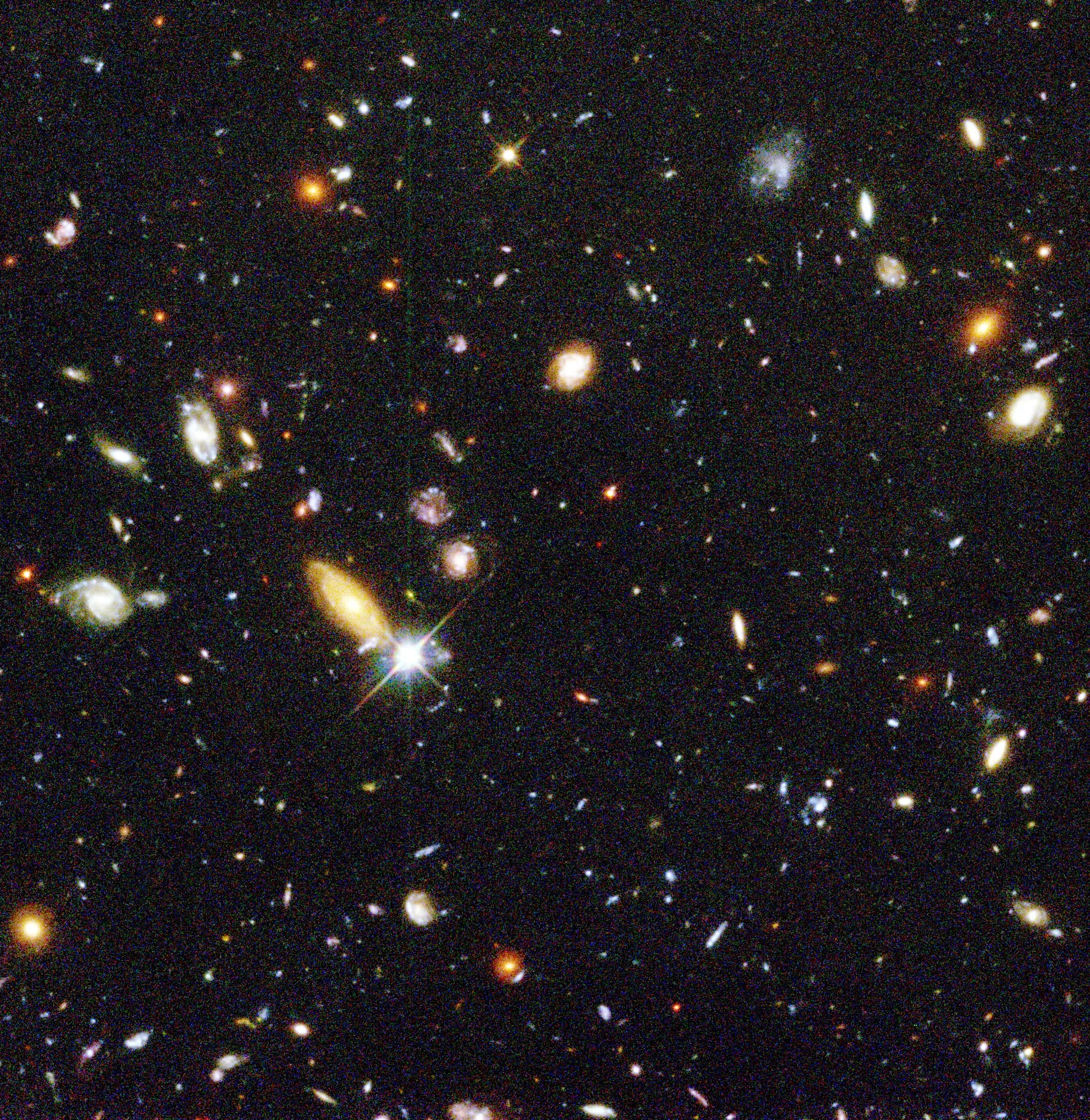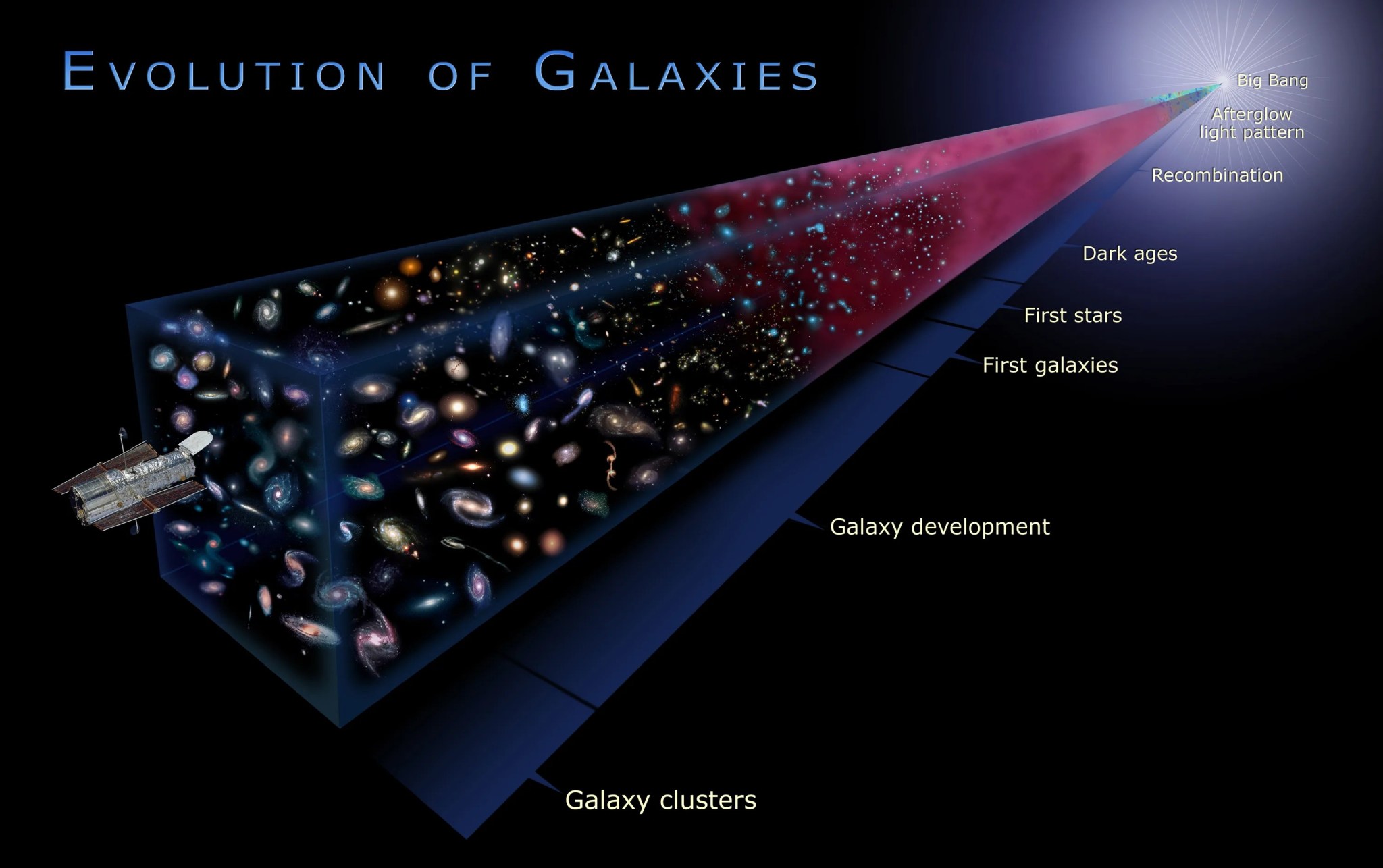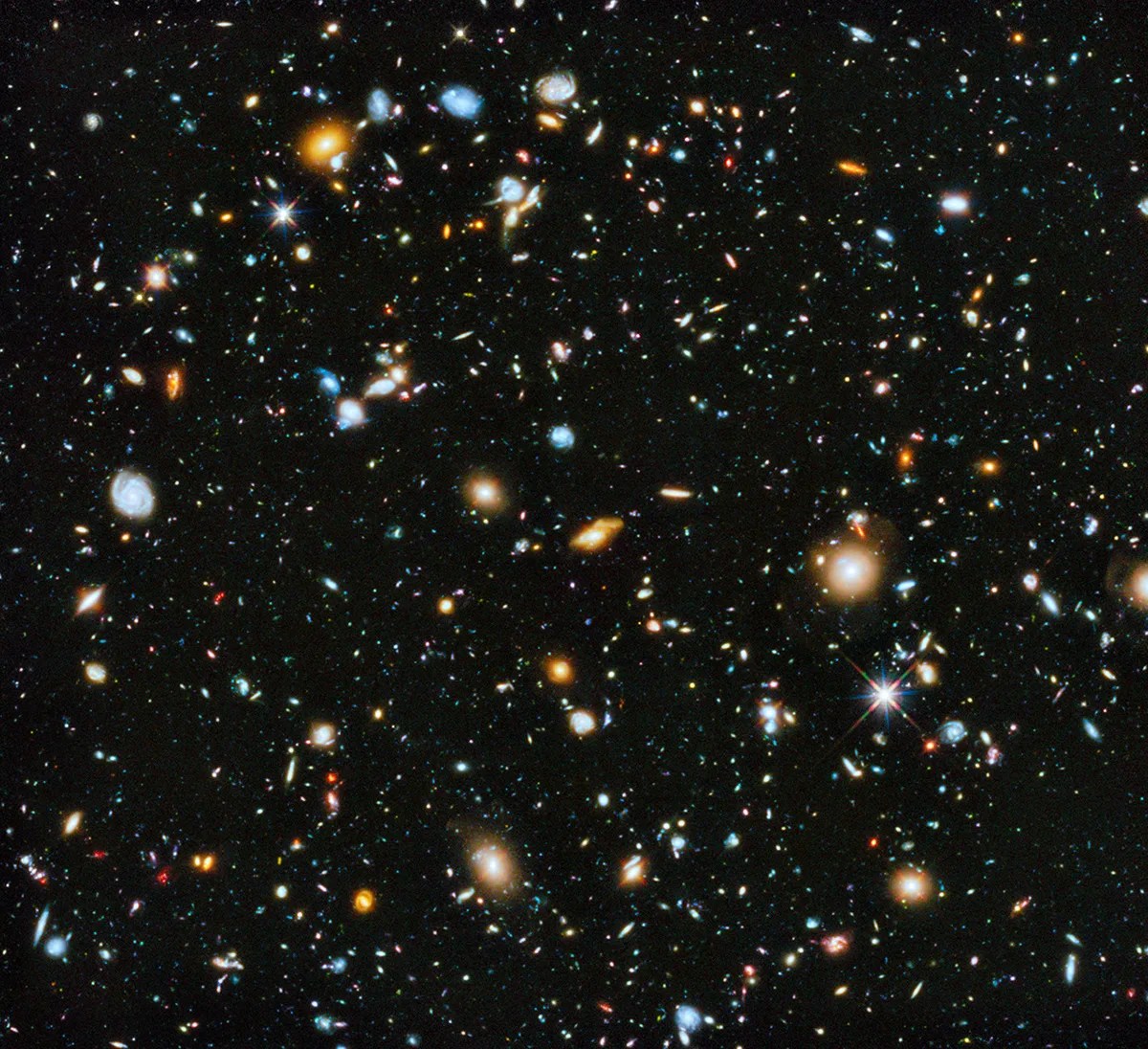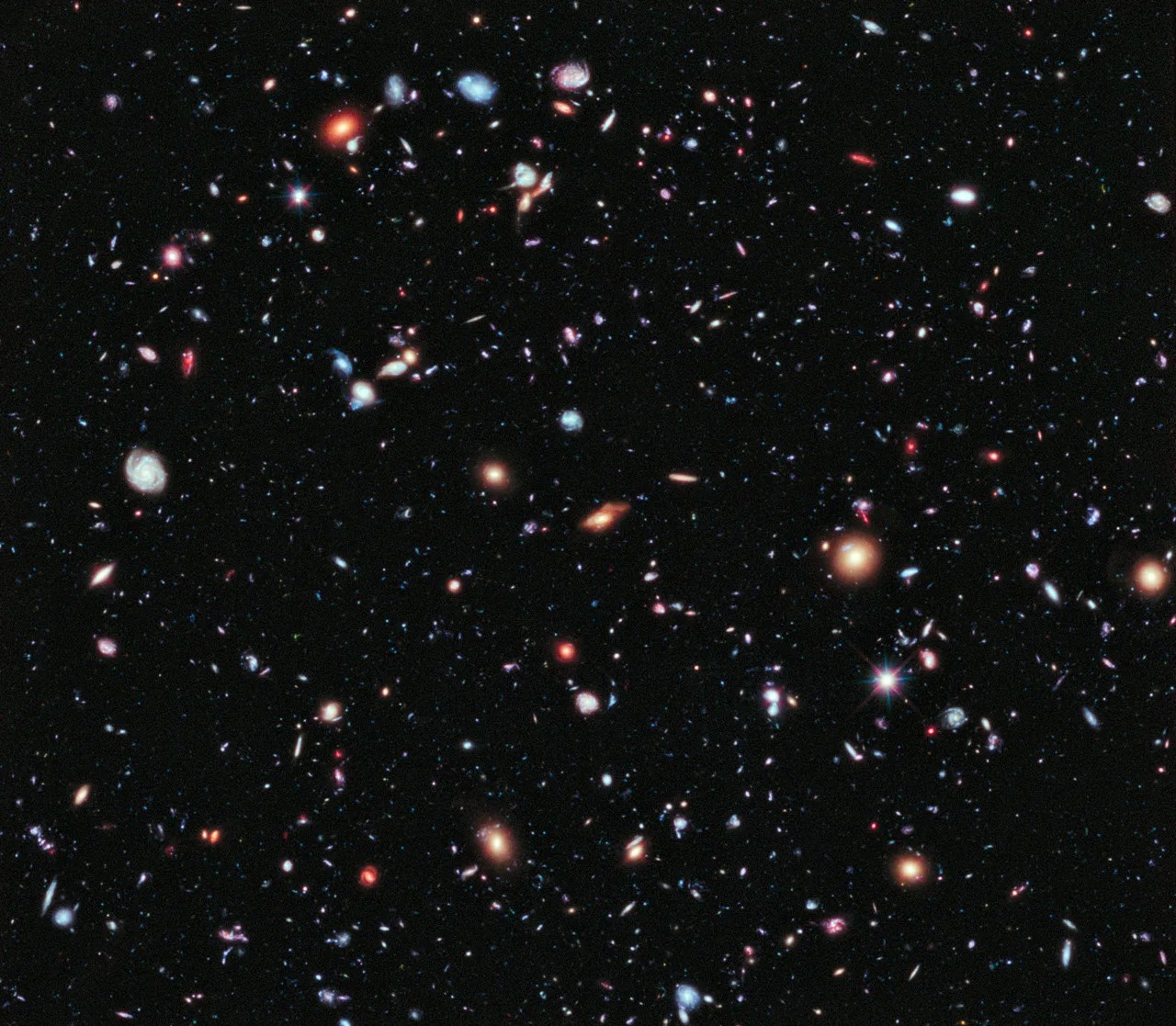Science
Hubble's Deep Fields
Hubble observations have forever changed our understanding of the universe, but no single image has reshaped that understanding like the Hubble Deep Field.
Overview
The Hubble Space Telescope has made over 1.7 million observations since its launch in 1990, capturing stunning subjects such as the Eagle Nebula and producing data that is featured in almost 22,000 scientific papers. But no image has revolutionized the way we understand the universe as much as the Hubble Deep Field.
Taken over the course of 10 days in 1995, the Hubble Deep Field captured roughly 3,000 distant galaxies varying in their stages of evolution.
You’re Doing What?
When Hubble first launched, many members of the astronomy community doubted its ability to observe distant galaxies. John Bahcall, one of the world’s top astrophysicists and a Hubble advocate, co-wrote a Science paper in 1990 arguing that Hubble wouldn’t reveal any galaxies not already visible from ground-based methods.
History played out a little differently. In 1994, Robert Williams, director of the Space Telescope Science Institute in Baltimore, Maryland, developed an interest in Hubble’s ability to observe distant objects when he witnessed exposures taken in May and June by Wide Field and Planetary Camera 2 (WFPC2), a high-resolution camera capable of capturing images over a wide field of view and wavelengths. The data showed a “cosmic zoo” of objects, suggesting that another deep exposure could reveal unknown parts of the universe.
Williams controlled 10 percent of Hubble’s observation time, known as director’s discretionary time. He decided to use some of that time to take a long exposure that would be made immediately available, instead of waiting for a similar proposal to come in, go through a lengthy approvals process, and be restricted on when the data could be made public. After his decision, he created a team at the Space Telescope Science Institute for nearly a year of preparation, working to find the right location in the sky and taking test exposures to confirm the area they chose was free of large galaxy clusters.
The next step was choosing a spot in the sky on which to train Hubble’s camera. Williams and his team needed a dark area with no nearby stars or other objects, whose glow would drown out the fainter galaxies he hoped to find with the exposure. That meant the area couldn’t be near the plane of the Milky Way, which was bright with cosmic objects. The area also needed to be a continuous viewing zone, or an area without interference from the Earth, Sun, or Moon. The team ultimately chose a location within Ursa Major, near the handle of the Big Dipper, that looked relatively empty. That emptiness would provide a gateway to see much farther back in time.
In the end, the patch of sky was about the equivalent of holding a pinhead at arm’s length.
A Core Sample of the Universe
The Hubble Deep Field image holds 342 separate exposures taken between December 18 and 28, 1995. The picture we see was assembled from blue, red, and infrared light. The combination of these images allows astronomers to infer the distance, age, and composition of the galaxies photographed. Bluer objects, for example, contain young stars or could be relatively close. Redder objects contain older stars or could be farther away.
Most of the galaxies are so faint – four billion times fainter than the human eye can see – that they had never been observed before, even by the largest telescopes.
“As the images have come up on our screens, we have not been able to keep from wondering if we might somehow be seeing our own origins in all of this,” Williams said at the time. “These past 10 days have been an unbelievable experience.”
The “deep” in Hubble Deep Field refers to the telescope’s ability to look at some of these far, faint objects. Looking at far-away objects in space is like seeing back in time. Light moves at tremendous speed, but it still takes time to travel across the vastness of space. Even the light from our own Sun needs eight minutes and 20 seconds to reach Earth, so when we look at the Sun, we see it as it was a little more than eight minutes earlier. The farther away the object, the younger it appears in Hubble’s gaze. The Deep Field was like a core sample of space, showing galaxies at different and earlier stages of development the deeper they appeared in the image.
Researchers from the State University of New York at Stony Brook analyzed the photo and chose several dozen candidates that could be more distant than any galaxies seen up to that point. They identified the galaxies based on their color, because more distant galaxies appear redder as the light reaches us. This happens because the light stretches as it travels through the universe, transforming into infrared wavelengths, which are redder.
A 1998 follow-up infrared image taken with Hubble’s Near Infrared Camera and Multi-Object Spectrometer discovered galaxies believed to be over 12 billion light-years away, even farther than those seen in the Hubble Deep Field.
Hubble Deep Field South
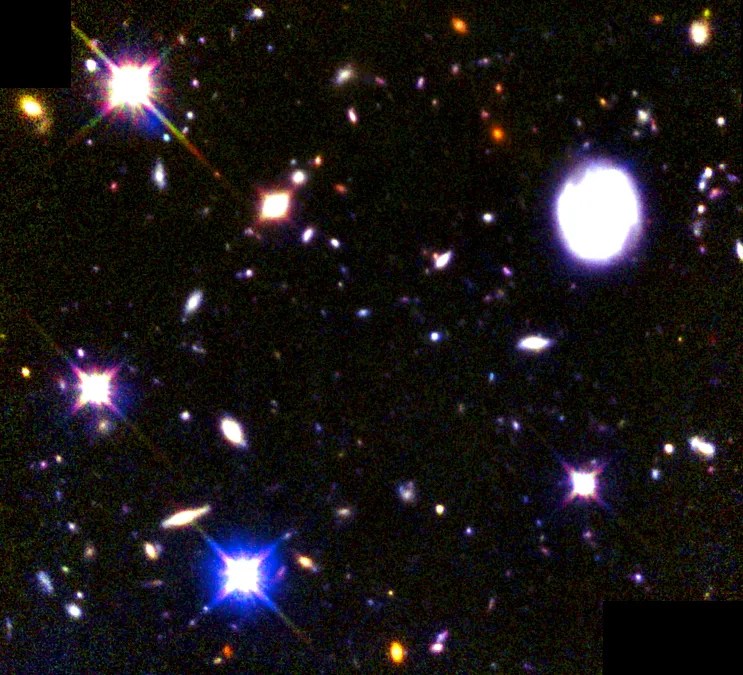
After the success of the original Hubble Deep Field, astronomers sought new ways to increase our understanding of the universe. Since it would take 900,000 years for astronomers to observe the whole sky, they knew they would have to rely on more samples like the Hubble Deep Field to infer what the entire universe looks like.
The Hubble Deep Field South focused on a region in the constellation Tucana, near the south celestial pole, and doubled the number of distant galaxies available to astronomers. Williams and a team of 50 astronomers and technicians at the Institute and at Goddard Space Flight Center in Greenbelt, Maryland, carried out the 10-day-long observation in October 1998.
Hubble Ultra Deep Field
In 2004, Hubble captured a million-second-long exposure that contained 10,000 galaxies. This new image, the Hubble Ultra Deep Field, observed the first galaxies to emerge from the “dark ages,” a time just after the Big Bang.
A servicing mission in 2002 had installed a new camera, called the Advanced Camera for Surveys (ACS). That camera had twice the field of view and a higher sensitivity than WFPC2, the camera that captured the original Deep Field. The final Ultra Deep Field photo is actually combined from an ACS image and an image from Hubble’s Near-Infrared Camera and Multi-Object Spectrometer.
“Hubble takes us to within a stone’s throw of the Big Bang itself,” said Massimo Stiavelli, an instrument scientist for Hubble at the Space Telescope Science Institute.
From ground-based telescopes, the location of the Ultra Deep Field in the constellation Fornax – right below the constellation Orion – looked mostly empty, much like the other Deep Field locations, allowing for more distant observations to take place.
The Ultra Deep Field image contained several odd galaxies, such as one shaped like a toothpick and another shaped like a bracelet link. Such galaxies come from a more chaotic time before the development of structured galaxies like the Milky Way.
Ultra Deep Field data also taught astronomers that black holes at the center of galaxies likely grew over time, that large galaxies build up gradually as others merge and collide, and that some of the earliest galaxies were much smaller than our current Milky Way.
Hubble Ultra Deep Field-Infrared
In 2009, Hubble captured near-infrared light wavelengths in the same region as the Ultra Deep Field, revealing galaxies formed just 600 million years after the Big Bang.
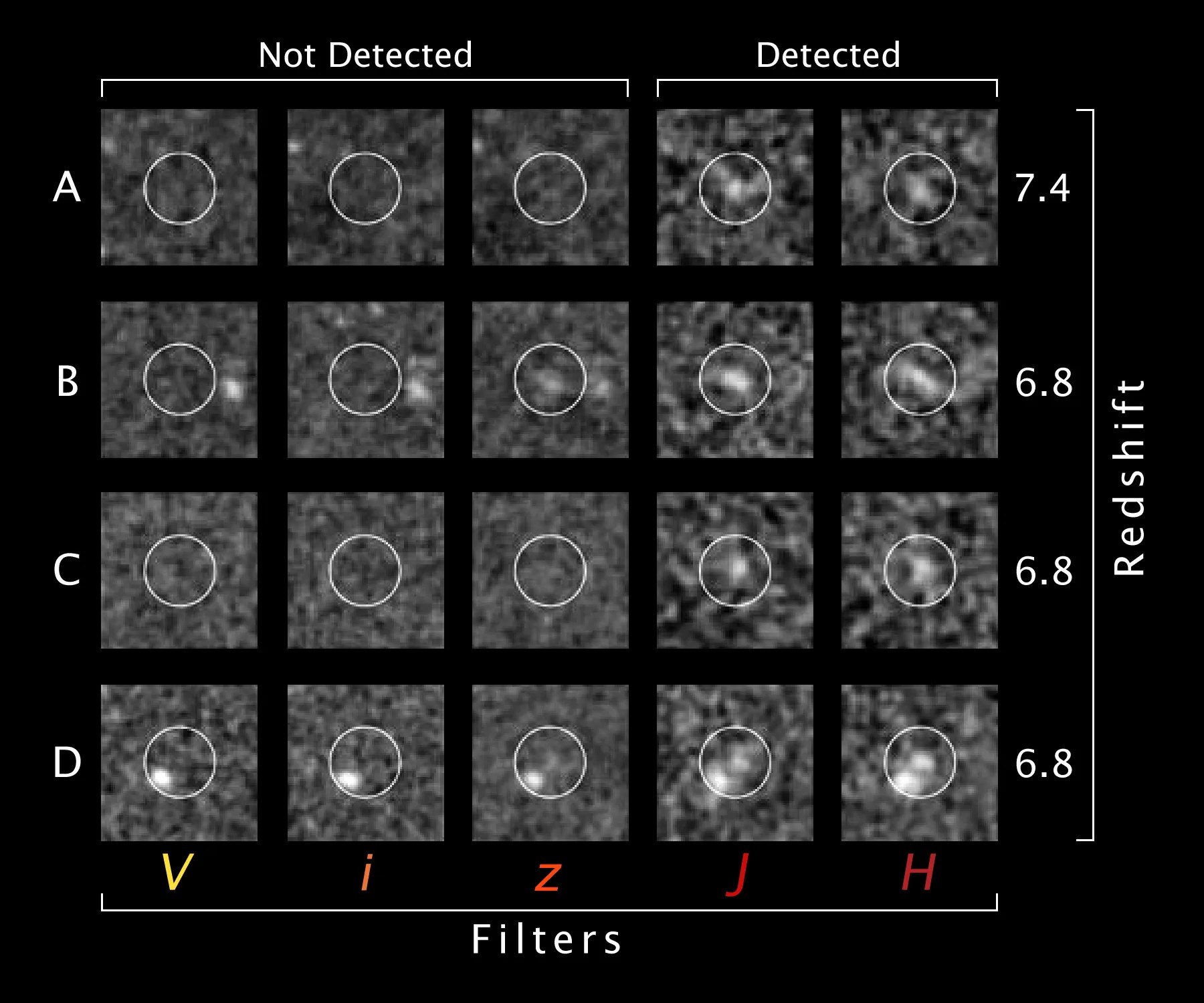
The light from one object, called UDFj-39546284, traveled 13.2 billion light-years to reach Earth. It’s a compact galaxy made up of blue stars, and astronomers found that the rate of star formation grew by a factor of 10 in just over 200 million years – that may sound like a long time to us, but it’s tiny for the universe.
Hubble eXtreme Deep Field
In 2012, Hubble took it to the extreme. Astronomers combined 10 years of photographs taken of a region in the center of the original Ultra Deep Field. Even with its smaller view, the eXtreme Deep Field still showed 5,500 galaxies.
The faintest galaxies visible in this image are one ten-billionth of what the human eye can see, and most of the galaxies shown are from when they were young and small, often colliding and merging together.
Ultra Deep Field 2012
After observations made over six weeks in August and September 2012, a team of astronomers discovered a population of seven primitive galaxies formed when the universe was just 3% of its present age. The observations supported the idea that galaxies may have provided enough energy to reheat the universe after the Big Bang.
Frontier Fields
NASA’s Great Observatories – Hubble, Spitzer, and Chandra – teamed up in 2013 for the Frontier Fields, a bold multi-year campaign to provide critical data to aid investigations of dark matter and how galaxies change over time, among others.
The campaign provided 12 new deep field images, and astronomers were able to detect galaxies 100 times fainter than those they observed in the Hubble Ultra Deep Field. Focusing on high-redshift galaxies and gravitational lensing, or the natural distortion of light from massive galaxy clusters, the team worked to detect galaxies too faint to be seen by Hubble alone. Such an undertaking propelled our understanding of the universe in ways that could only be achieved with all the Great Observatories working together. The campaign ended in 2017, and now astronomers can use the dataset to continue exploring the early universe.
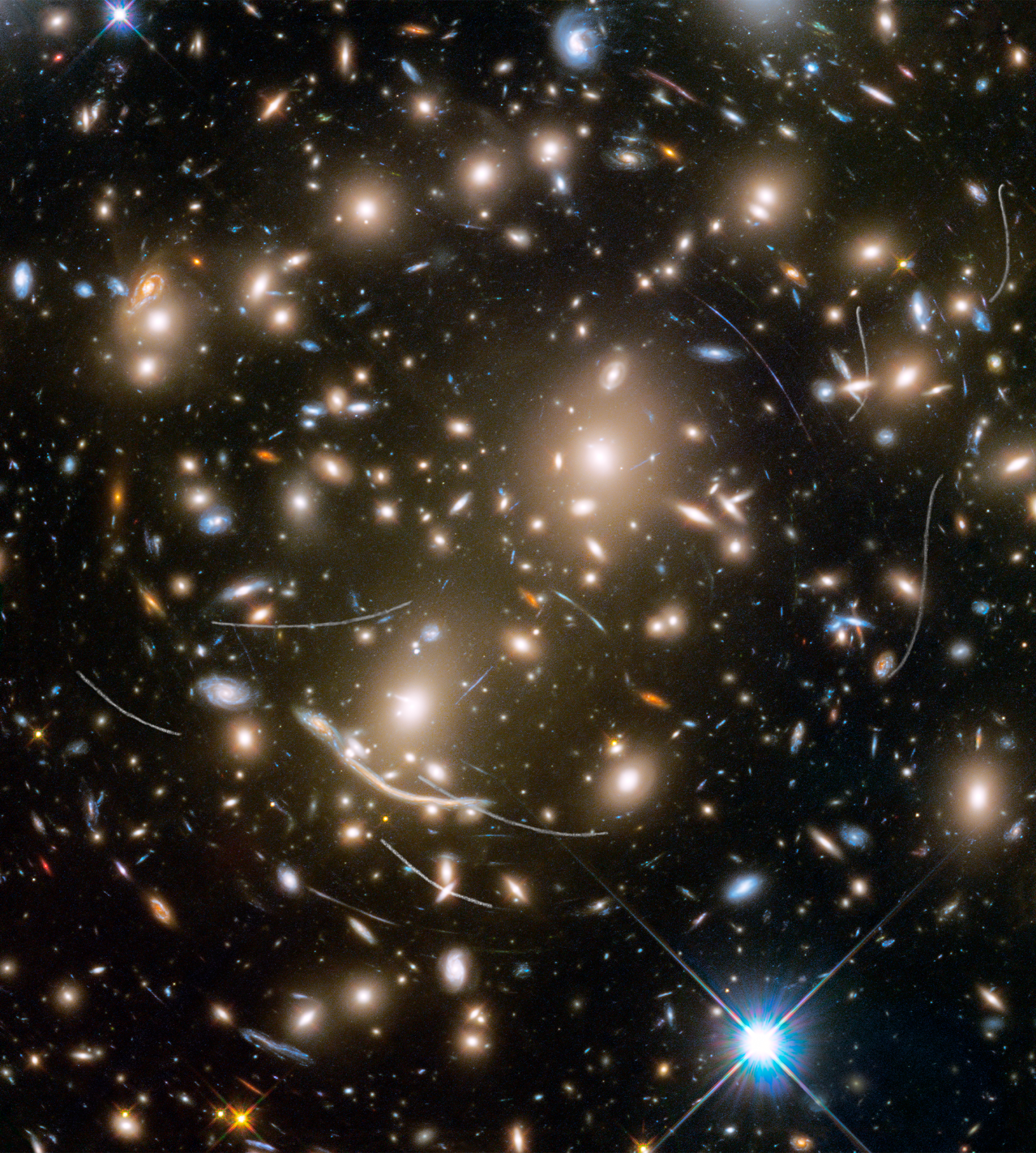
Not only did the Hubble Deep Field change how we understand the universe, it also changed how we share findings.
“This coming together of the community to generate a shared, nonproprietary dataset was essentially unprecedented but has since become the model for the majority of large astronomical projects,” wrote University of Washington astronomer Julianne Dalcanton. “This new mode of operating has democratized astronomy.”
Hubble’s data was compiled for the Legacy Field, a combination of nearly 7,500 Hubble exposures. It represents 16 years of observations, 265,000 galaxies, and 13.3 billion years, making it the largest collection of galaxies documented by Hubble.
The role of exploring the early universe further will fall to the James Webb Space Telescope. Designed to see even farther back than Hubble because of its powerful infrared vision, Webb has already offered us exciting observations and new discoveries. But our evolving understanding began with Hubble, and a team not afraid to explore what looked like nothing.
Hubble Deep Fields Gallery
Explore More
Read about Hubble's latest discoveries.

Today’s NASA/ESA Hubble Space Telescope image features the spiral galaxy NGC 4535, which is situated about 50 million light-years away…

This article was updated to include the full range of dates from the SOHO image. Lee esta historia en español…

Stars of all ages are on display in this NASA/ESA Hubble Space Telescope image of the sparkling spiral galaxy called…




























